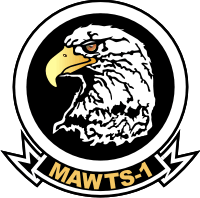The Third Commander of MAWTS-1: Major General C.L. Vermilyea
Clyde L. Jake” Vermilyea enlisted in the Marine Corps in 1955 and served in all three Marine Divisions as a Naval Gunfire Spotter and Radio Operator, later becoming an Airborne Radio Operator in 1959. In 1960 he began flight training as a Marine Aviation Cadet (MARCAD) and was commissioned a second lieutenant in 1961.
He served in all three active Marine Aircraft Wings as a C-130 pilot, transitioned to helicopters (CH-46s) in 1969 (HMM-164 Viet Nam) and flew both fixed and rotary wing until retiring in 1993 as a Major General.
Vermilyea served as the third commander of MAWTS-1, and the first helicopter pilot, beginning the practice of rotating the command of MAWTS-1 between a fixed wing and helicopter/tiltrotor pilot that has served the Marine Corps well, and continues to this day.
We had the privilege to talk with Vermilyea on Dec. 5, 2023 to get his perspective on the founding of MAWTS-1 and the projected long term benefits to the Marine Corps and, in fact, the national defense, of MAWTS-1 and the Weapons Tactics Instructor (WTI) concept.
One of our key takeaways from the discussion with “Big Jake,” as our other interviewees referred to him as, was the background he brought to the command. He had served in two different aviation communities before coming to MAWTS-1, neither of which had had the benefit of the tactical fixed wing training vehicles such as MAWTULANT/PAC, the predecessors to MAWTS-1.
His experience was that although the transport and helicopter communities had in-community training methods, they had not been fully integrated into the combined arms concept central to the Marine Corps’ Marine Air Ground Task Force (MAGTF) approach to warfighting.
He had been involved in Project 19, the precursor to the standing up of MAWTS-1 and enthusiastically supported the concept.
The WTI program would infuse the full integration of Marine Aviation knowledge and training throughout the Marine Corps. No matter your MOS, you knew what the other guy was doing. This highlighted the importance of the TACC (Tactical Air Command Center) being deployed to the WTI course and incorporated in the syllabus and exercises. It also ensured proper use and integration of the all-important communications necessary in combined operations.
Thus, the individuals with varying backgrounds contributed in different ways. Their unity of purpose was animated by the different personalities and skill sets of the founding generation of MAWTS-1, but through this process a template for training for what LtGen Rudder has called the “physics of combat” which allowed for innovation going forward.
MajGen Vermilyea stated that while MAWTS-1 is an aviation unit, and works closely with the Aviation Department, it is sponsored by, and answerable to, the Training Department of HQMC, almost always under a ground forces general. While this setup has worked well it has the potential for complications.
During Vermilyea’s tenure as CO, LtGen William Fitch became the Deputy Chief of Staff, Air (DCSAIR). LtGen Fitch had a jaundiced view of MAWTS. During his courtesy call to the new DCSAir, LtGen Fitch informed Vermilyea that one of the first things he intended to do was to shut MAWTS down.
Vermilyea’s response, after recovering, was to request the general visit MAWTS during a class, to include the flight phase, and to make the judgement based on his own observation rather than other people’s opinion. LtGen Fitch agreed to do that, and in fact made several visits, including flying the A-6 in training and even in the final exercise.
At the end of that episode Fitch told Vermilyea he had “the best squadron in the Marine Corps.” Fitch’s support thereafter was strong and unequivocal.
We asked Vermilyea why he thought Fitch changed his mind?
Vermilyea underscored that Fitch saw that it worked and had enormous potential for the future of aviation.
One aspect Fitch noted was the use of night vision goggles in helicopters doing low level and Nap of the Earth flying, and the potential for fixed wing aircraft. This ‘learn while you train,’ and plowing that idea into the way ahead for the operating force is a key contribution of MAWTS-1 and the WTI program and how it works.
During his tenure, Vermilyea saw a growing need for liaison with the other services and outside agencies. In order to not disrupt the work of the instructor staff he created, with the help of LtGen Fitch, the Aviation Development and Tactics Evaluation section (ADT&E) was created which was comprised of instructors who had finished their normal tour but extended a year. This released them from the many and varied instructor duties and allowed them the freedom to travel and liaise with other services and entities, and work closely with DCSAir, for new ideas and innovations.
Vermilyea closed by underscoring his key mantra for effective leadership is to understand and apply RAA-Responsibility (cannot be delegated), Authority, (which can be delegated), and Accountability. Leave one out and nothing works. At MAWTS, if you broke the ROE (Rules of Engagement) you went home.
And that brings a key final observation. Although the instructors at MAWTS, and the students who attend the classes are selected for their flying skills and leadership potential, the mission is integration of the combat force for the total mission, not individual performance. The MAGTF, with properly trained and outfitted Air, Ground, and Logistics units becomes a lethal force.

